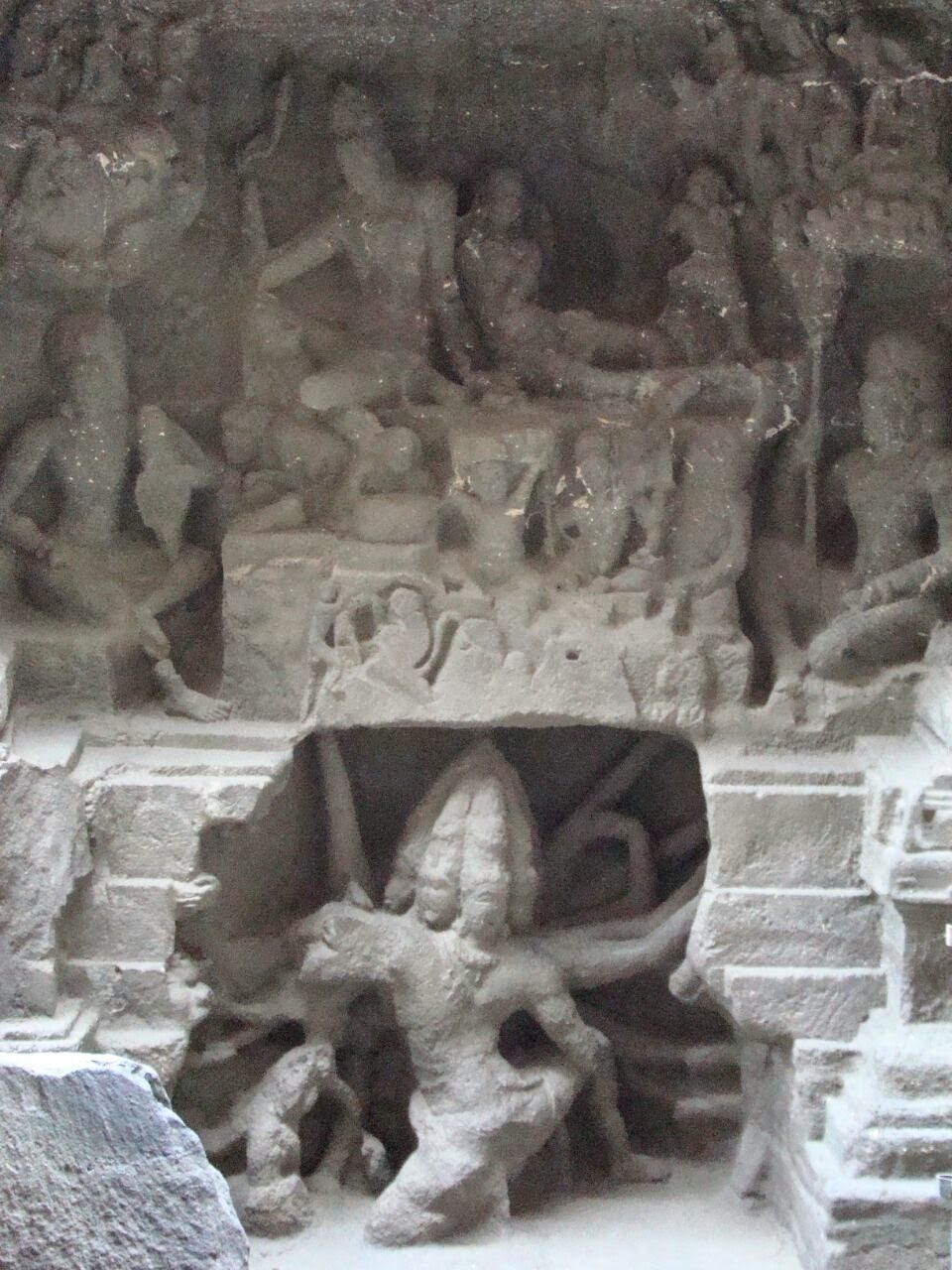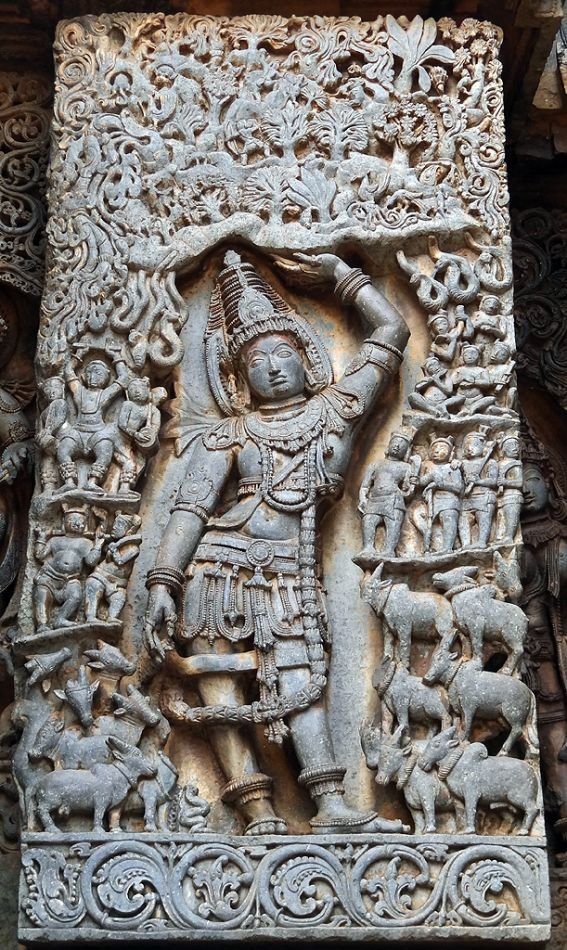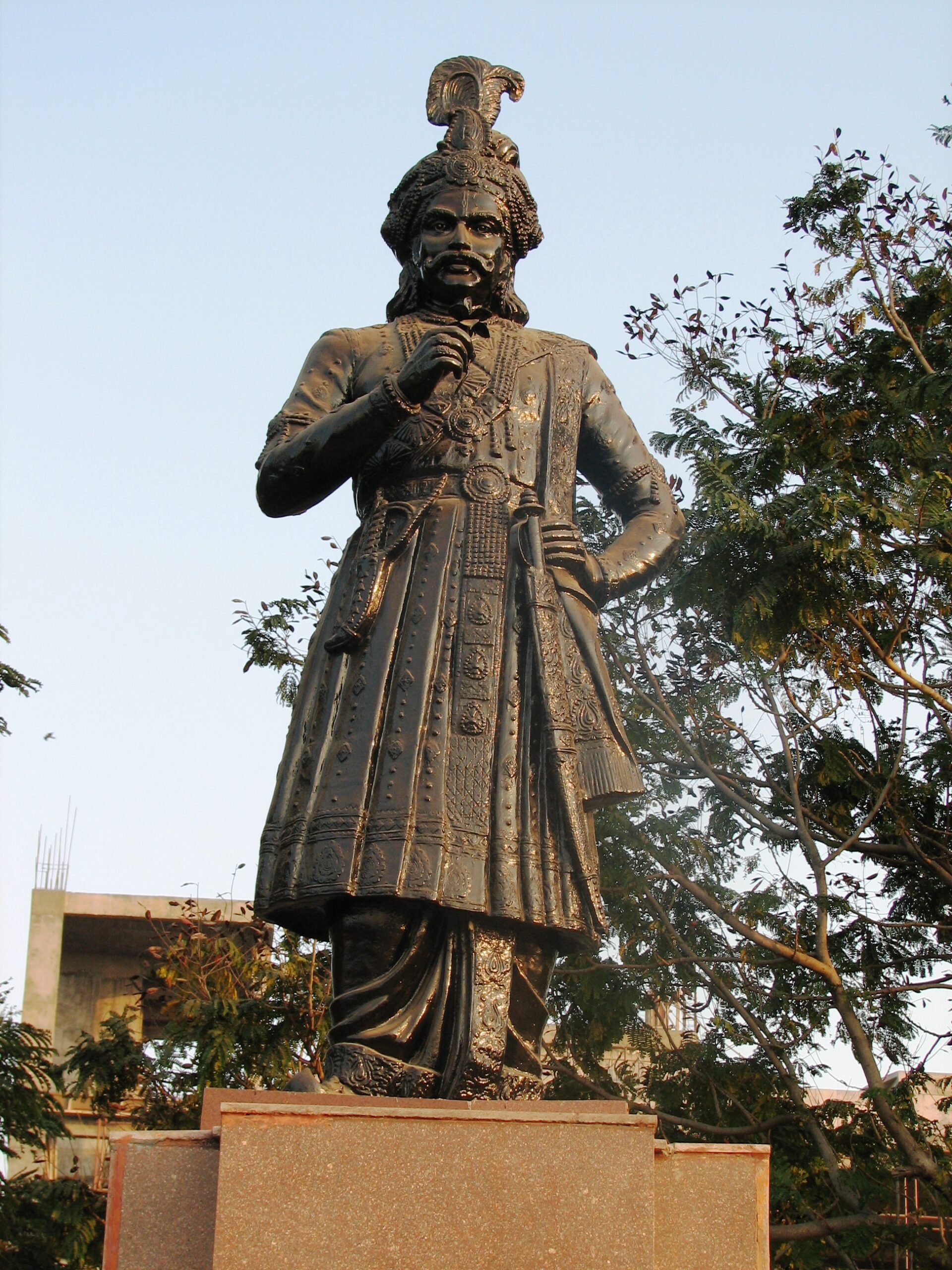In South India, the art of sculpture flourished under the patronage of many great dynasties such as Pallavas, Cholas, and Rashtrakutas, etc. The sculptural art in this region followed the classical tradition and simultaneously a freshness and vitality are also seen in the sculpture of this region.
Kailash temple at Ellora built by the Rashtrakutas and the Ratha temples of Mahabalipuram, built by the Pallavas are examples of famous rock-cut temples in the South. Most probably the stability and permanence of rocks attracted the patrons of art and builders who decorated these temples with beautiful sculptures.
Chalukyas
Early Chalukyan activity takes the form of rock-cut caves while later activity is of structural temples. The earliest example of Chalukyan art is probably the Ravana Phadi cave at Aihole which is known for its distinctive sculptural style.
One of the most important sculptures at the site is of Nataraja, surrounded by larger-than-life-size depictions of the saptamatrikas: three to Shiva’s left and four to his right. The figures of the Chalukyan period are characterized by graceful, slim bodies, long, oval faces they are distinctly different from contemporary western Deccan or Vakataka styles.
Rashtrakutas

They created the greatest wonder of medieval Indian art in their Kailash temple at Ellora, a monolithic rock-cut architecture. Another magnificent sculpture at Ellora is a panel depicting Ravana shaking Mount Kailasa. In this remarkable scene, the quivering of the mountain can be felt, and Parvati is shown greatly agitated, turning to Siva, grasping his hand in fear.
Pallavas
The Pallavas, who left behind magnificent sculptures and temples, established the foundations of medieval South Indian architecture. Some of the outstanding sculptures that are credited to their patronage are the Mahishasuramardini, Girigovardhana panel, Trivikrama Vishnu Arjuna’s penance, or the Descent of the Ganga, Gajalakshmi, and Anatasayanam.
Cholas
At the Brihadesvara temple at Thanjavur, the most mature and majestic of the Chola temples, the sculpture has attained a new maturity which is evident in the gracefully modeled contours of the figures, their flexed poses, delicate ornamentation, pleasing faces, and certain freshness, all of which add charm to the work.
Gajsurasamaharamurti is one of the best examples of Chola craftmanship in the 11th century. It depicts the vigorous dance of the irate god after he killed the elephant – demon.
Hoysalas
The decoration is elaborate, the emphasis being more on ornamentation than movement or the grace of the human body. Hoysala sculptures are somewhat squat and short, highly embellished, or almost over-loaded with ornamentation, but yet are pleasing to behold.

A spectacular example of the Hoysala sculptural art is portrayed in the carving showing Lord Krishna holding aloft the mountain Govardhana to save the inhabitants of Gokul from the wrath of Indra.
Vijayanagara
Vijayanagara was the last great Hindu Kingdom in south India. Several beautiful temples were constructed at places like Hampi, Kanchipuram, etc. during the regime of the Vijayanagara Empire.

The Vijayanagara emperors caused excellent portraits to be carved by the sculptors to immortalize them in the vicinity of their favorite deities. One such fine example of this can be seen in the sculptures of Krishnadevaraya at Gopura in Chidambaram. During this period representations in narrative forms of the Ramayana and Krishna, Bal Lila became favorite themes.
Sculptures under Sultanate and Mughal Rule
The spread of Muslim power in India gave a set back to the art of sculpture. The Islamic law considers it sinful to produce the images of living human and even more sinful to have those of god. Hence the Muslim invaders considered it their religious duty to forbid the making of images of gods or goddesses, human beings, or animals. They resorted to large-scale destruction of the images and sculptural representation.
As a result, most of the sculpture pieces of the time were destroyed and only such sculptural pieces could survive which were buried underground or were located in inaccessible places. The art of sculpture suffered maximum at the hands of Muslim rulers during medieval times.
Though traditions of stone sculptures continued, no major sculpture movement survived under the Mughal and the other Muhammadan rulers Under the Muhammadan rulers great impetus was given to architecture, but sculptures are rarely found and even those available are products of local chieftains. During the British regime, no proper patronage was provided to sculptors and the whole tradition of Indian art almost came to a standstill. During the British regime also sculptural art suffered a great loss due to the loss of patronage to sculptors and the whole tradition of sculptural art almost came to a standstill.
